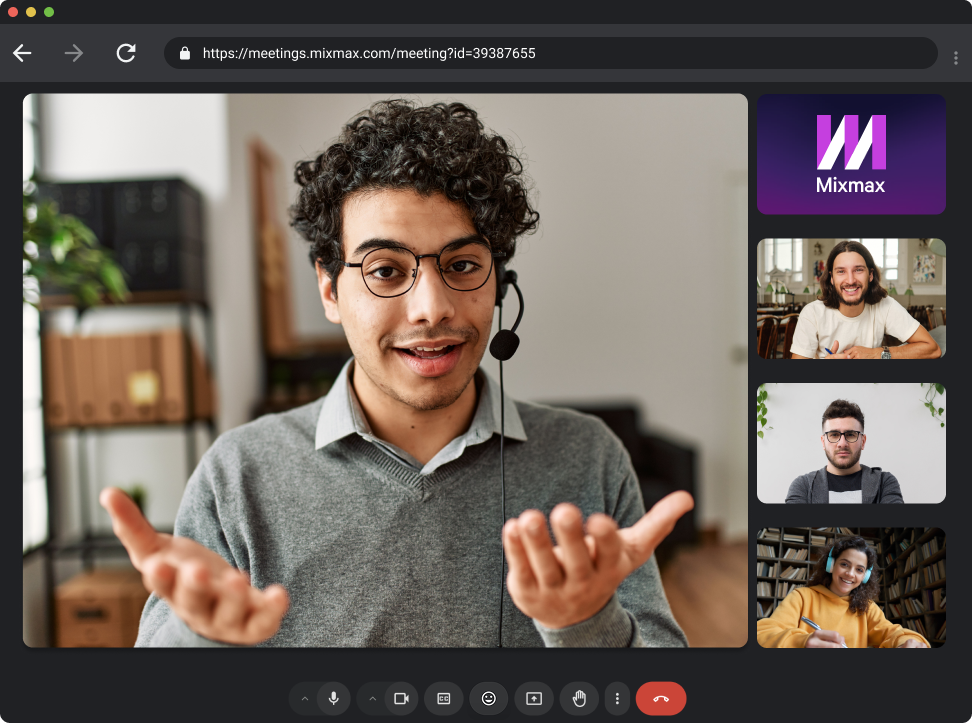Most sales teams already know the basics of running a good meeting: have an agenda, do your research, ask good questions. You’ve heard these tips many times before.
But if we’re honest, those basics aren’t what cause deals to stall.
What actually hurts deals are the harder, more human parts of selling - the things that happen (or don’t) both during and after the meeting. The messy parts. The parts that are easy to get wrong when your day is full of back-to-back calls and endless tasks.
Here are five advanced tips to run more successful sales meetings, based on what we’ve learned from Mixmax customers running tens of thousands of sales meetings.
None of these are “beginner” tips. They’re the skills great sellers practice every day to keep deal momentum strong:
1. Practice active listening - the kind that helps you hear between the lines
Most sellers think they listen. But true active listening is about more than staying quiet. It means paying attention to the tone, the hesitation, and the questions behind the questions your customers ask.
For example, when a prospect asks, “How long does setup take?” they might really be asking, “How fast can I prove this is worth it?”
When they say, “We’re reviewing priorities,” they might mean, “We’re not convinced yet.”
Great sellers catch these signals through active listening.
But it’s hard to do when your brain is also trying to take notes, keep track of action items, and plan what to say next. That’s why tools like Mixmax Meeting Copilot are so valuable. They take notes and keep track of action items for you, so you can practice active listening and focus on your customers.
Sales expert and coach, Leslie Venetz, says: “active listening is actually the most important and most foundational skill for any seller.” You can learn more in her recent podcast conversation with Mixmax's Heath Barnett.
2. Treat every question as a signal - not just something to answer
When a buyer asks a question, it’s easy to respond and then move on. But strong sellers slow down and treat questions as clues about where the buyer is in their decision process.
- A technical question might signal evaluation.
- A pricing question might signal buy-in.
- A timeline question might signal urgency.
Capturing these signals matters - but in busy meetings, it’s common to forget the small details that point to big opportunities.
Meeting Copilot surfaces these key moments in your meeting summary. That way, you don’t miss the signals your prospect gave you, even if they were subtle, and you can action on them in the right ways.
3. Turn objections into next steps - not dead ends
Objections are often misunderstood. They’re not rejections. They’re invitations to keep the deal alive with more insight.
When a customer says, “We’ve tried tools like this before,” they’re telling you exactly where they need reassurance.
When a customer says, “Now isn’t the right time,” they’re hinting at timing, not interest.
Great sellers don’t panic when they hear objections. They dig deeper. They use the objection to steer the conversation toward clarity.
Meeting Copilot captures objections in real time and turns them into action items you can follow up on. This makes it easier to respond thoughtfully in the moment - and even easier to craft a smart follow-up email later.
4. Follow up fast - while the conversation is still fresh in your customer's mind
The biggest killer of sales momentum isn’t a bad meeting. It’s a slow follow-up.
Buyers forget. They get busy. They lose emotional energy. When follow-up is delayed, excitement fades and deals go cold. Or worse, they just get impatient and go to your competitor.
The most successful sellers send actionable follow-ups quickly - ideally within minutes.
Meeting Copilot makes this easy by generating an instant meeting summary, complete with the action items, concerns, and next steps discussed. You don’t have to sift through your notes or re-watch a recording. You just refine and send.
Average sellers end their calls with, “I’ll send a follow-up.”
But the best sellers end with clarity:
- What was covered, especially any decision that were made
- Who is doing what
- By when
- What success looks like
- What the next milestone is
Great next steps reduce confusion. They set expectations. They create movement.
Meeting Copilot helps by turning every discussion point into a clear, organized list of next steps. When buyers see their tasks spelled out in writing, they’re far more likely to follow through — and your deal keeps moving.
Bringing it all together
Running effective meetings requires being fully present, catching the small details, turning signals into action, and keeping momentum alive.
These five tips — active listening, signal reading, objection reframing, fast follow-up, and strong next steps — are what separate good sellers from great ones.
If you can master these skills, your meetings won’t just feel better - they’ll start delivering the outcomes you want.
Sounds good in theory, but in practice it's much harder. The conversation moves quickly, and before you know it, the meeting has ended and you're immediately on to the next one. That's why Meeting Copilot is so valuable. It handles taking notes, capturing objections, and summarizing action items, leaving you to engage your customers during the call. Meeting Copilot delivers instant summaries to your inbox, along with a draft follow-up email, making it easy to follow-up with your customer in minutes, not hours or days. Mixmax Meeting Copilot helps you run more effective meetings and keeps your deal momentum going.




